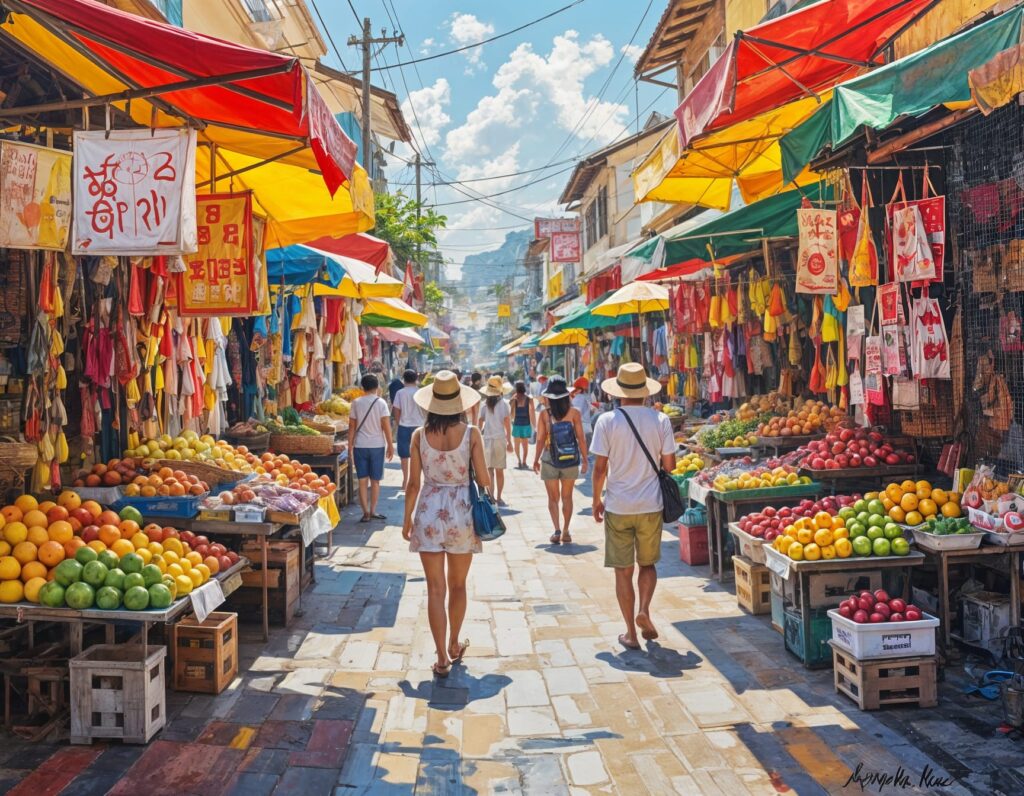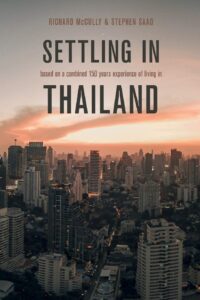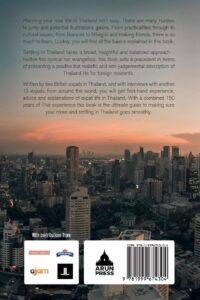The early morning fog lifts over Chiang Mai’s Old City as Angie, a 34-year-old graphic designer from Portland, sips her cappuccino at a trendy café. Her rent for a spacious two-bedroom apartment with a pool? $400 a month. Back in Oregon, she was paying $2,100 for a cramped studio. This isn’t a vacation—this is her life now, and she’s part of a growing wave of Westerners who’ve discovered what might be the world’s best-kept secret.

Why Now?
The mass migration of Americans and Brits to Southeast Asia isn’t happening in a vacuum. It’s the result of several converging forces that have made this transition not just possible, but increasingly attractive.
The Remote Work Revolution
The pandemic fundamentally restructured how we think about work and location. What started as a temporary necessity has evolved into a permanent shift. Tech companies, marketing agencies, consulting firms, and creative studios have realized that talent isn’t geography-dependent. For the first time in history, a significant portion of the workforce can live anywhere with reliable internet—and Southeast Asia has spent the last decade building exactly that infrastructure.
The Cost-of-Living Crisis
Let’s talk numbers. In 2024, the median rent for a one-bedroom apartment in San Francisco hit $3,000. In London, it’s hovering around £2,000 ($2,500). Meanwhile, healthcare costs in the US have become a running joke with tragic punchlines—a simple ER visit can cost thousands even with insurance.
Now contrast that with Southeast Asia: a beautiful apartment in Bangkok’s trendy Sukhumvit area runs $600-800. A full dental cleaning in Vietnam? $20. A gourmet dinner at a rooftop restaurant in Bali? $15. The math isn’t just compelling—it’s overwhelming.
Breaking Down the Economics
Let’s get granular with real numbers from someone making $60,000 annually—solidly middle class in the US or UK, but potentially wealthy in Southeast Asia.
Monthly Budget in Austin, Texas:
- Rent (1-bedroom): $1,600
- Utilities: $150
- Health insurance: $450
- Groceries: $400
- Transportation: $200
- Eating out (modest): $300
- Entertainment: $150
- Total: $3,250/month ($39,000/year)
Monthly Budget in Da Nang, Vietnam:
- Rent (2-bedroom with ocean view): $500
- Utilities: $50
- Health insurance (international): $150
- Groceries: $200
- Transportation (scooter + grab): $80
- Eating out (frequently): $250
- Entertainment & travel: $200
- Gym membership: $30
- Weekly massages: $40
- Total: $1,500/month ($18,000/year)
That’s a savings of $21,000 annually—enough to fully fund retirement accounts, travel extensively, or simply build wealth at a rate that would be impossible back home. And this isn’t about living in poverty; it’s often about living better while spending less.
The Lifestyle Upgrade
Talk to expats who’ve made the move, and the cost savings are just the beginning. Many describe a fundamental improvement in their quality of life that goes beyond the bank account.
Health and Wellness
In Thailand, getting a full blood panel, MRI, and consultation with a specialist costs about $200—without insurance. The facilities are modern, often newer than American hospitals, and waiting times are measured in minutes, not hours. Many expats finally address health issues they’d been ignoring because US healthcare was too expensive or UK waiting lists too long.
Then there’s the lifestyle factor. The tropical climate encourages outdoor activity year-round. Fresh tropical fruits are cheaper than processed snacks. Many cities have excellent gyms that cost $20-30 monthly. Street food culture means healthy, fresh meals are more accessible than fast food.
Time and Pace of Life
Marcus, a 42-year-old software developer from Manchester, describes his transformation: “In the UK, I’d spend two hours commuting daily, grab meal deals for lunch, and collapse exhausted every evening. Here in Penang, I walk ten minutes to a co-working space, have incredible hawker food for lunch, and still have energy to hit the beach or explore after work. I’m not just living longer—I’m actually living.”
The traffic can be chaotic, yes, but many Southeast Asian cities are surprisingly walkable or have cheap, efficient public transportation. More importantly, the cultural pace is different. The hustle culture that dominates Western cities gives way to something more sustainable.
The Digital Nomad Hubs
Southeast Asia isn’t monolithic—each destination offers a distinct flavor, and expats tend to gravitate toward different cities based on their priorities.
Chiang Mai, Thailand: The OG Digital Nomad Capital
Chiang Mai pioneered the digital nomad scene over a decade ago and remains the gold standard. The Old City, ringed by ancient walls and moats, is packed with co-working spaces, cafés with fast WiFi, and affordable accommodations. The cost of living is still incredibly low—$1,000-1,500 monthly for a comfortable lifestyle—and the community is well-established.
The city offers hundreds of temples, night markets, nearby mountains for hiking, and a food scene that ranges from $1 street noodles to high-end farm-to-table restaurants. The visa situation is friendly, with multiple options for longer stays. The only downside? It’s become a victim of its own success, with some areas feeling oversaturated with expats.
Bali, Indonesia: The Lifestyle Paradise
Bali isn’t the cheapest option anymore—parts of Canggu now rival Western prices—but it remains magnetic. The island offers stunning beaches, terraced rice fields, world-class surfing, yoga studios on every corner, and a spiritual culture that many Westerners find deeply appealing.
Neighborhoods like Ubud attract artists and wellness enthusiasts, while Canggu draws the entrepreneurial crowd. Sanur offers a quieter, family-friendly vibe. The social scene is vibrant, perhaps too much so for those seeking authentic cultural immersion. But for those wanting a Western comfort level with tropical beauty, Bali delivers.
Da Nang & Hoi An, Vietnam: The Hidden Gems
Vietnam’s central coast is having a moment. Da Nang offers modern infrastructure, stunning beaches, and a rapidly growing expat community without feeling overrun. It’s genuinely affordable—a nice apartment runs $400-600—and the food scene is incredible. Nearby Hoi An, a UNESCO World Heritage Site, provides ancient town charm and has become a favorite for longer-term stays.
The Vietnamese government is increasingly friendly to remote workers, and the country feels safe, efficient, and welcoming. Plus, Vietnam’s geographic position makes it perfect for exploring the rest of Asia.
Penang, Malaysia: The Underrated Winner
Malaysia’s second city doesn’t get enough credit. George Town is a UNESCO site with incredible colonial architecture, world-famous street food, and a multicultural population that speaks English widely. Malaysia’s MM2H visa program offers a path to longer-term residency, and the country’s infrastructure rivals the West.
Healthcare is excellent and cheap—Penang is actually a medical tourism destination. The food is consistently rated among the world’s best. And the cost of living remains reasonable despite the high quality of life.
The Practicalities
The romantic vision of dropping everything and moving to a beach in Thailand crashes into reality pretty quickly. Here’s what actually works:
Visa Strategies
Most Southeast Asian countries offer 30-60 day tourist visas on arrival. Many Westerners start with “visa runs”—leaving the country briefly to reset their tourist visa. It’s not ideal, but it works for testing the waters.
For longer stays, options vary:
- Thailand’s DTV (Destination Thailand Visa): Launched in 2024, it allows remote workers to stay 180 days at a time for five years. Requirements include proof of employment and funds.
- Indonesia’s B211A: Provides 60 days extendable to 180 days, though the process can be bureaucratic.
- Malaysia’s MM2H: Requires more substantial financial commitment but offers a 10-year renewable visa.
- Vietnam’s business visa: Can be extended up to 3 months at a time with the right sponsorship.
Many expats work with visa agencies to navigate the paperwork. It’s not as simple as showing up, but it’s far more accessible than immigrating to most Western countries.
Healthcare Reality
This surprises people most: healthcare in Southeast Asia is often better than back home, at least for routine and elective care. Bangkok’s Bumrungrad Hospital has JCI accreditation and treats half a million international patients annually. The facilities are spotless, modern, and efficient.
Most expats use a hybrid approach: international health insurance for catastrophic coverage (around $100-200 monthly for comprehensive plans), while paying out of pocket for routine care because it’s so cheap. A dental cleaning, physical therapy session, or doctor’s consultation costs less than a Western insurance copay.
Banking and Taxes
This gets complex. US citizens still owe US taxes on worldwide income, though the Foreign Earned Income Exclusion covers up to about $120,000. UK citizens generally aren’t taxed on foreign income if they’re non-resident, but establishing non-residency requires careful planning.
Most expats maintain bank accounts in their home countries while opening local accounts for daily expenses. Services like Wise make international transfers cheap and easy. Cryptocurrency is also popular for its flexibility, though regulations vary by country.
The Challenges Nobody Talks About
It’s not all Instagram-perfect sunsets and $3 massages. Real talk from people who’ve made the move:
Visa Anxiety
Immigration rules change. Thailand might crack down on back-to-back tourist visas. Indonesia might increase requirements. You’re always somewhat uncertain about your long-term status, which makes it hard to fully settle in or make major commitments.
Cultural Isolation
Even in expat-heavy areas, there’s often a subtle separation from local culture. Many Westerners find themselves in a bubble—hanging out primarily with other expats, frequenting the same Western-friendly spots, never learning the language deeply. This can feel hollow after the initial excitement wears off.
Professional Limitations
Remote work is great until your company decides remote means “within the same country.” Timezone differences can be brutal—working US hours from Asia means being nocturnal. Career advancement is harder when you’re not in the office. Some industries simply don’t offer remote options.
Healthcare Blind Spots
While routine care is excellent, cutting-edge treatments for serious conditions might require repatriation. Mental health services, while improving, don’t match Western standards in many places. And navigating healthcare in a foreign language during an emergency is genuinely scary.
The Perpetual Foreigner
You’ll never fully belong. Southeast Asian countries generally don’t offer paths to citizenship for regular folks. You’re always an outsider, always on a temporary visa, always subject to changing rules. For some, that’s liberating. For others, it’s existentially unsettling.
Who's Actually Making This Move?
The stereotype is young digital nomads, but the reality is more diverse:
Early retirees in their 50s who’ve saved enough to stop working but not enough to retire comfortably in the West are finding they can retire a decade early in Thailand or Malaysia.
Families are discovering that international schools in places like Bangkok or Penang cost $10,000-15,000 yearly compared to $30,000-50,000 for private schools in the US, while offering excellent education.
Healthcare refugees are people dealing with chronic conditions who can’t afford American healthcare or can’t get timely treatment through the NHS.
Lifestyle seekers are singles or couples who’ve realized that the Western middle-class dream—house, car, 401k—requires sacrificing their actual life and youth to achieve.
The Future of This Trend
This isn’t a temporary fad. Several forces suggest it will accelerate:
Economic Pressure Intensifies: Western cost of living continues rising faster than wages. The American dream increasingly requires two high incomes, and even that’s barely enough. This pressure is pushing more people to consider alternatives.
Remote Work Normalizes: As more companies embrace remote work permanently, the stigma around living abroad disappears. It becomes just another lifestyle choice rather than a radical departure.
Infrastructure Improves: Southeast Asia continues investing heavily in digital infrastructure, healthcare, and quality of life improvements. The gap in comfort between West and East narrows while the cost gap remains enormous.
Visa Competition: Countries are starting to compete for digital nomad residents, recognizing they bring money without taking jobs. Expect more favorable visa programs as nations realize the economic benefit of attracting remote workers.
Making the Decision: Is It Right for You?
The honest answer: it depends entirely on what you value and what you’re willing to trade.
You might thrive if:
- Financial freedom matters more than career status
- You’re comfortable with uncertainty and adaptability
- You enjoy traveling and experiencing new cultures
- Your work is genuinely location-independent
- You’re not deeply rooted in your current community
- Healthcare costs are a significant burden
- You’re burned out on Western hustle culture
You might struggle if:
- Family and long-time friends are central to your happiness
- You need cultural familiarity and shared language
- Career advancement is a priority
- You have specific healthcare needs requiring Western specialists
- You value long-term stability and certainty
- You’re deeply attached to your home culture
The First Step
For most people, the path isn’t a dramatic burning of bridges. It’s testing the waters—spending a month in Chiang Mai, trying out Da Nang for six weeks, experiencing Penang for a season. See how you feel when the novelty wears off. Notice whether you’re energized or exhausted. Track whether you’re actually saving money or just spending differently.
The beautiful thing about this particular life change is its reversibility. You’re not immigrating; you’re experimenting. Your home country isn’t going anywhere. If Southeast Asia isn’t for you, you can go back. But thousands of Westerners have discovered that once they’ve experienced this different way of living—where money stretches further, time moves slower, and life feels more immediate—going back becomes the harder choice.
The question isn’t whether Southeast Asia is objectively better than the West. It’s whether it might be better for you, right now, at this point in your life. And the only way to answer that is to go and find out.
Hey there! We hope you love our fitness programs and the products we recommend. Just so you know, Symku Blog is reader-supported. When you buy through links on our site, we may earn an affiliate commission at no extra cost to you. It helps us keep the lights on. Thanks.
Disclaimer: The information provided in this discussion is for general informational and educational purposes only. It is not intended as medical or professional advice. Only a qualified health professional can determine what practices are suitable for your individual needs and abilities.


